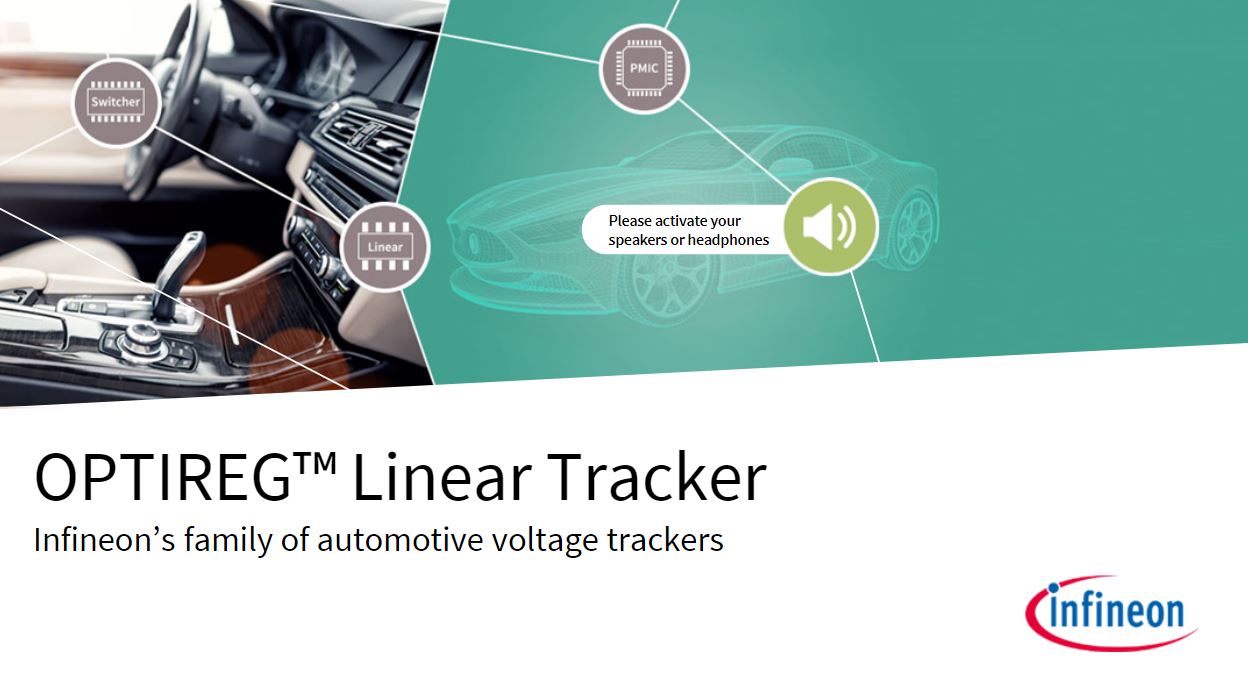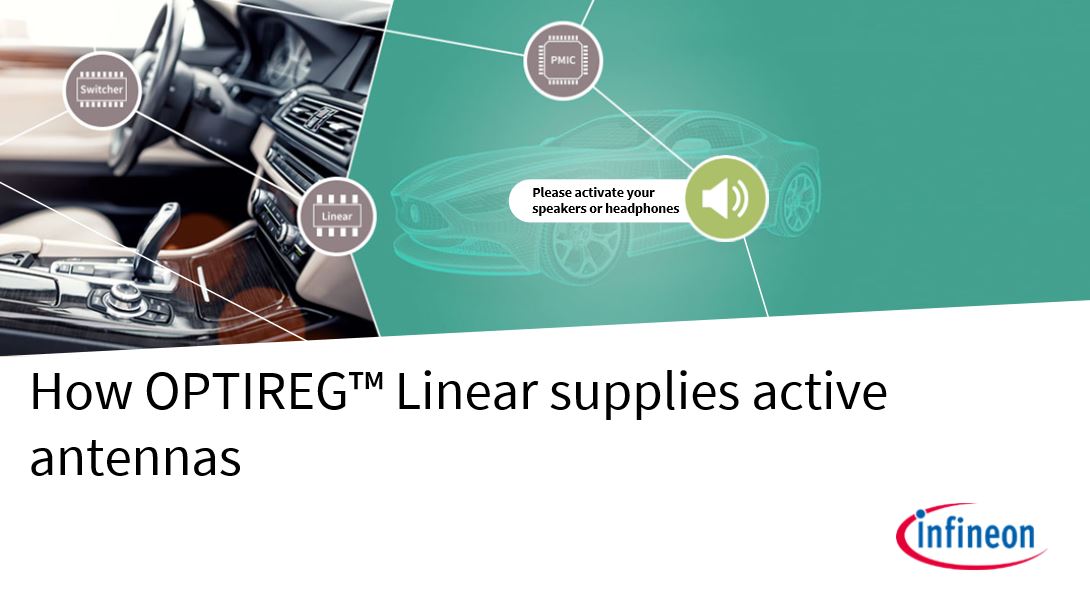Linear voltage regulator (LDO)
Simple and versatile low-dropout linear voltage regulators
Linear voltage regulator (LDO) Unterkategorien
Alle Unterkategorien schließen Alle Unterkategorien anzeigenLDO stands for low dropout and is used to refer to linear voltage regulator ICs, with an optimized dropout voltage. An LDO converts a higher input voltage to a lower output voltage by making use of a regulated pass-transistor. An easy analogy to this method of voltage conversion is to consider an electronically controlled variable resistor. The resistance is automatically adjusted so that at a given output current the voltage drop is exactly the value required to generate the desired output voltage.
Infineon’s LDO families in an overview:
High performance regulators are optimized for direct battery connection. They feature an extended input voltage range for cranking conditions, ultra-low quiescent current during stand-by and excellent line transient performance.
Voltage trackers are designed to supply off-board loads, for example sensors. As trackers do not have their own internal voltage reference, they accurately track an externally provided reference voltage. This external voltage is normally derived from the microcontroller unit (MCU) supply and allows precise data acquisition from the sensor. Trackers feature various protection mechanisms to accommodate for broken cable faults and short-to-battery conditions.
Post Regulators are used in combination with a pre-regulator. They come with excellent PSRR to generate a clean output voltage and are cost and space effective. A combination of post- and pre-regulator increases the overall system efficiency substantially. Optimally suited pre-regulators for Infineon post-regulator devices are Infineon OPTIREG™ Switchers or the Infineon OPTIREG™ PMICs. For more information on Infineon’s switched-mode automotive converters please visit www.Infineon.com/OPTIREG.
OPTIREG™ Linear Application Specific:
Application specific LDOs are a collection of highly specialized LDOs. Examples include active antenna supplies and LDOs for usage in 24 V systems.
General purpose LDOs refer to Infineon’s well-established and versatile LDOs. They are suitable for a broad range of general-purpose applications.
LDOs for a broad range of industrial applications.
An LDO is a simple, yet robust and cost effective means to generate a stable output voltage whilst supplying constant load currents of up to 500 mA depending on the application and the LDO used. An architecture containing an LDO requires minimal external components, keeping the overall system complexity and BOM cost low.
To operate an LDO, only a minimal amount of external components are required. Essential for all LDOs are an input capacitor for decoupling and an output capacitor for buffering line transients and obtaining LDO stability. Depending on the LDO topology, a diode may be required to protect the LDO during reverse polarity conditions.
The efficiency of an LDO is defined as the ratio between output power (POUT) and input power (PIN). To calculate the input power accurately, the quiescent current (Iq) also has to be taken into account.
The quiescent current is the current required to power the internal circuitry of the LDO.
The power loss, or dissipated power, is defined by the difference between input power and output power.
To learn more about LDOs please refer to the Infineon “What The Designer Should Know” - Guide















